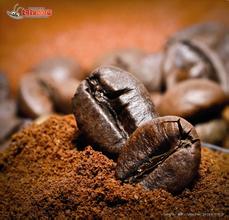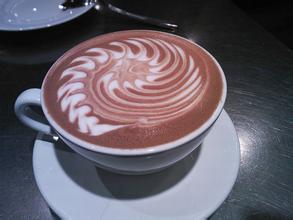Introduction to the flavor-rich coffee treatment method of Coffee Manor in Rwanda
The taste of Rwandan coffee is described as "grass aroma" with tropical climate characteristics. In addition to the sweetness of fruit, this coffee also gives people a feeling of freshness, clearness and freshness. Bourbon coffee grown in Rwanda is amazing for its sweet fruit, full-bodied, unrestrained and lingering aftertaste. This coffee has a delicious, citrus sweetness and a deep chocolate color, and Rwanda bourbon is known as "coffee that captures and condenses the whole of Africa in a cup."
Rwanda (Rwanda) coffee with its high-quality washed Arabica coffee beans, eye-catching, in the international market is becoming more and more popular. According to Karuritwa, marketing and promotion officer of the Rwandan Coffee Association, Rwanda plans to export 3000 tons of coffee this year, further increasing coffee production to meet the increasing market demand. Starbucks, the world's largest coffee and beverage retailer, has also partnered with the Rwandan government to import Rwanda coffee, just as a brown pigeon flies from its cup against the line "Cup of Hope". Indeed, coffee places the hopes of the people of Rwanda. They hope to increase coffee exports to promote the country's economic development, and they also hope that the two major tribes, the Hutu and the Tutsi, who once killed each other, will work together to grow coffee, eliminate gratitude and hatred, and build a better tomorrow together.
Malaba Coffee grows in southern Rwanda, about 12 kilometers (7 miles) from the city of Butare and 150 kilometers (93 miles) from the capital, Gejali. The plan began in the Malaba area of Butare province, but was taken over by a local government organization in 2006, which is now part of the Huye district of the southern province. Due to its proximity to the East African Rift Valley and the Neuenway Forest Mountains, this zone is sloping, steep and has fertile volcanic soil. Coffee is grown at 1700 to 2100 m (5577-6889 ft) above sea level, usually with terraces on steep hillsides. The zone also has an average annual rainfall of 115 centimeters (45 inches). Most of them come from the rainy season from March to May, which is also the main coffee harvest season. The temperature at high altitude is slightly lower, with an average of about 20 °C (68 °F). The washed coffee beans are air-dried on the grid due to a slight difference in season. After washing the coffee beans many times to completely remove the remaining skin and sugary outer layer, put the coffee beans into a sheltered rack to air-dry. Cooperative staff regularly flip coffee beans, while technicians continue to look for and pick out poor quality coffee beans. The two-week drying process takes place in the sun (prepare the mulch in case of rain) and keep turning the coffee beans. This step reduces the water content of coffee beans from 40% to 12%.
Then the mechanic transported the coffee beans to the technology center near Chez. Some machines installed in warehouses on the hills remove the cutin from coffee beans. The staff sent the coffee beans to nearby research institutes for final quality control-manual sorting, which was carried out by several experienced women. After bagging and labeling according to its quality, the coffee beans can be stored in the warehouse waiting for the market.

Important Notice :
前街咖啡 FrontStreet Coffee has moved to new addredd:
FrontStreet Coffee Address: 315,Donghua East Road,GuangZhou
Tel:020 38364473
- Prev

Introduction to the characteristics of Coffee Variety producing areas of Renas Manor Coffee Grinding treatment in El Salvador
Pacamara is the artificial breeding variety of Pacas and Maragogipe. It was first cultivated by researchers in El Salvador in 1958. Pacamara is an excellent variety under rare artificial breeding, which is better than blue, and perfectly inherits the advantages of the mother plant. It not only has the excellent taste of Pacas, but also inherits the large size of Maragogipe, and the bean body is at least like beans.
- Next

Description of taste, characteristics and flavor of rosy summer coffee in Panamanian jadeite manor
The very famous Panamanian emerald estate Esmeralda, yes, is the one that appears most frequently before the name of the Panamanian rose summer, while this tanned Blue Sapphire grows 1400 meters on the outskirts of the Panamanian plateau towns of Carnastes and Haramiloguit. The rich volcanic soil in this area is naturally used to grow this wonderful coffee, from
Related
- Does Rose Summer choose Blue, Green or Red? Detailed explanation of Rose Summer Coffee plots and Classification in Panamanian Jade Manor
- What is the difference between the origin, producing area, processing plant, cooperative and manor of coffee beans?
- How fine does the espresso powder fit? how to grind the espresso?
- Sca coffee roasting degree color card coffee roasting degree 8 roasting color values what do you mean?
- The practice of lattes: how to make lattes at home
- Introduction to Indonesian Fine Coffee beans-- Java Coffee producing area of Indonesian Arabica Coffee
- How much will the flavor of light and medium roasted rose summer be expressed? What baking level is rose summer suitable for?
- Introduction to the characteristics of washing, sun-drying or wet-planing coffee commonly used in Mantenin, Indonesia
- Price characteristics of Arabica Coffee Bean Starbucks introduction to Manning Coffee Bean Taste producing area Variety Manor
- What is the authentic Yega flavor? What are the flavor characteristics of the really excellent Yejasuffi coffee beans?

